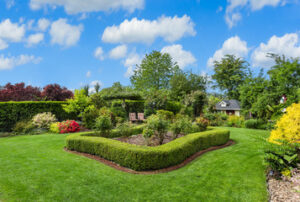Before washing your windows, wipe down frames and grids with a lint-free cloth or rag. This will remove any dust or dirt that may have built up, preventing it from being rubbed into the glass.
Next, spray the window thoroughly with vinegar and water or a commercial product. Wipe away the cleaner with a clean, dry lint-free cloth, preferably microfiber, to avoid streaks. For professional assistance, contact Window Cleaning Mission Viejo.

1. Vinegar
One of the most basic natural cleaning agents, vinegar can work wonders in a variety of window cleaning situations. However, it is often best used in combination with other ingredients for a more thorough and powerful clean that also leaves a streak-free finish. The most common type of vinegar is distilled white vinegar, which has high acidity levels and excellent cleaning capabilities. Other types of vinegar, such as apple cider and lemon juice, are also effective in a range of cleaning situations.
A solution of distilled white vinegar and water is a good choice for general window cleaning, both inside and out. The acetic acid in the vinegar works to cut through grease and grime, making this a useful cleaning agent for windows that are especially dirty or grimy. This cleaning solution can be diluted with water if needed for a gentler effect. The addition of a few drops of an essential oil can help to reduce the pungent odor that can be associated with a vinegar-based cleaning agent.
Rubbing alcohol can be added to the vinegar-water solution for a more advanced cleaning agent that also acts as a sanitizer. This type of cleaning solution works well on glass surfaces because rubbing alcohol evaporates quickly, which helps eliminate the appearance of streaks.
To make this simple and effective homemade cleaner, simply add 1/4 cup of rubbing alcohol and 2-3 Tbsp of distilled white vinegar to a spray bottle. Secure the lid tightly and shake well to combine the ingredients. Before each use, make sure the bottle has been cleaned thoroughly to avoid mixing chemicals. This solution can be used on both interior and exterior windows and is particularly useful for removing mineral deposits that tend to cause streaking.
2. Lemon Juice
The zesty juice of lemons not only adds a lovely fresh smell to the home but also has many uses around the house. It’s acidic nature makes it great for dissolving dirt and grime, especially when mixed with vinegar, which is a natural degreaser and disinfectant. The result is a streak-free finish that’s as good as store-bought cleaners without any toxic chemicals.
To get started, squeeze two tablespoons of lemon juice into a spray bottle, then fill the rest up with water and shake it to combine. Use the solution to clean your windows and mirrors for a brilliant shine. This solution is safe to use around children and pets, with no toxic fumes or residue.
A little baking soda also adds abrasive power to your homemade window cleaner recipe, and can help with particularly stubborn spots and streaks. Sprinkle a small amount of baking soda onto a damp cloth or paper towel, then gently rub over the glass surface. Once the grit is removed, wipe over with a dry cloth for a sparkling shine.
Another useful way to use lemons in cleaning is to make a homemade cheese grater cleaner. A spritz of this solution will have your cheese grater looking like new in no time.
If you don’t have any distilled white vinegar on hand, this simple plant-powered recipe can also be used to make a quick and effective DIY glass and mirror cleaner. It uses ingredients you already have in your pantry, so it’s safe to use around kids and pets, with no noxious fumes or plastic waste. It cuts through grease, grime, dust, fingerprints and other non-porous marks on windows, doors, cabinets and other surfaces, leaving them with a minty sheen that smells lovely.
3. Bicarb
Cleaning windows can be a pain, especially when stubborn smears and streaks keep reappearing. But according to one expert, the answer could be tucked away in your kitchen cupboard.
Using vinegar, baking powder or rubbing alcohol in homemade window cleaners can provide powerful results without the nasty side effects of chemical store-bought products. By avoiding them, you’re also doing your bit for the environment and reducing the amount of plastic bottles clogging up landfills.
Vinegar by itself is a great solution for tackling most marks, including grease stains, but it won’t cut through particularly stubborn grime. To achieve the best results, mix a solution of equal parts white distilled vinegar and water in a spray bottle and then apply it to your windows. Sprinkle a small amount of baking soda on a cloth to aid the cleaning process and make it less abrasive, and then wipe it all off to leave your windows shining.
Baking soda, also known as bicarbonate of soda, has a thousand and one uses around the home, from making cookies to polishing teeth. It’s also great for getting rid of stubborn smears and streaks on both glass and uPVC windows. The white powder is actually a naturally occurring mineral called trona, found in Wyoming, US, and has been used for millennia as an effective cleanser. It’s also a safe and green alternative to chemical cleaners, and, as Fantastic Services explain, it’s even able to tackle sea spray residue if you live close to the coast.
To use it, simply sprinkle a small amount onto a wet cloth or paper towel and then wipe across the surface of your window. Rinse the surface once you’re done with a bucket of hot water and then dry off the window with a soft chamois cloth or newspaper.
4. Ammonia
Ammonium hydroxide is an important ingredient in many commercial cleaning products and household cleaners because of its effectiveness at dissolving oils and grease. It is also relatively inexpensive and readily available. However, you should avoid using it on tinted windows because it can cause damage to the film. This can range from bubbling to peeling and cracking. In addition, ammonia can be harmful to the respiratory system and eyes if inhaled or ingested. If you use it, make sure to wear protective equipment and follow the instructions carefully.
Many store-bought glass cleaners promise a streak-free shine and come in convenient bottles that are easy to use. But you may be surprised to find that there are plenty of homemade recipes for cleaning your windows that you can easily make with items you probably have in your pantry or cabinet.
To create a home-made ammonia window cleaner, start by removing the spray mechanism from a quart-sized spray bottle. Add around 760 ml of water, then fill the bottle with 70 percent rubbing alcohol and one teaspoon of liquid dish detergent that will act against grease. Put the cap back on and shake to thoroughly mix all the ingredients. The rubbing alcohol prevents the formation of streaks when applying the solution to your windows.
To use your DIY ammonia window cleaner, spray it onto a microfiber cloth or sponge and wipe the surface of the window. Then, wipe it dry with a paper towel to avoid smearing the surface of the window. Repeat as needed until the window is clean and free of streaks. You can also combine ammonia with vinegar for even more powerful and effective results.
5. Soap
Window cleaning is a common household chore that requires specific tools and supplies to get the best results. While there are plenty of products that claim to provide a streak-free shine, most professionals opt for a simple soap and water solution. This method not only cleans the glass, but it also leaves a fresh finish on the frame and sills.
To keep windows looking cleaner longer, use a wetting agent such as Winsol Super Slip to maintain the best window results while helping your squeegee slide more freely. This is especially important when washing on hot days when the windows will dry faster and leave more streaks if not treated properly.
While some professional window cleaners may opt for a commercial cleaning product, the majority prefer to mix a solution of 10 parts distilled water and one part liquid dish soap (Dawn works well). This affordable mixture can deliver impressive results without leaving behind any streaks. It can even cut through grime and build-up that regular soaps and detergents might miss, such as hard water minerals.
When using this cleaning solution, be sure to wash each window in sections. This will prevent the soapy solution from drying too quickly, which can lead to streaks and a dingy appearance. Likewise, remember to wipe the squeegee after each pass over the window to remove excess moisture and eliminate any remaining smears.
Most professional window cleaners will also carry a small scraper with them while working. This can help remove stubborn marks and residue from the window before beginning to scrub it. However, homeowners should exercise caution when using this tool themselves, as it can be quite difficult to learn how to operate correctly and can damage the glass if used improperly.
